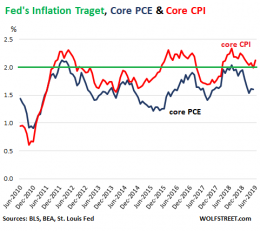

This is achieved by constructing the price index with data from 23 well-known IaaS cloud providers taking into account both functional and non-functional attributes of cloud computing services. The aim of the study is to determine the importance of each feature and its effect on the final price. The work presented in this paper focuses on the construction of a price index based on a hedonic pricing model, emphasizing, besides basic func-tionality features, additional qualitative and quantitative attributes defined the Quality of Services provided. As the price of cloud services depends on the supported characteristics and cloud providers do not adopt the same pricing model, the study of continuously evolving pricing schemes for such an innovative business model is a challenge. Currently, there is an increased demand for IaaS services, which in turn feeds competition among cloud providers. It includes control of computing resources, such as memory, computing power and storage capacity, satisfying the most fundamental IT needs for businesses on a usage-based payment model. Infrastructure as a Service (IaaS) is a rapidly expanding model of cloud computing. According to the results, RAM size, CPU power and subscription turned out to be the most influential factors that shape IaaS pricing. The hedonic pricing method is used to decompose cloud computing services into their constituent characteristics, obtaining estimates of the contributory value of each resource. The aim of this paper is the construction of such a price index, for the IaaS model, using data from a wide range of cloud providers and a large number of price bundles. The development of a suitable pricing method, based on an appropriate price index able to capture the market dynamics, is an obvious necessity. As a result, prices for cloud services are a result of a multidimensional function, shaped by the service's characteristics. Due to the existence of several IaaS cloud providers, there is increased competition among cloud companies, which develop different pricing models in order to meet the market demand. Infrastructure as a Service (IaaS), which includes control of fundamental computing resources, is expected to be the fastest growing model of public cloud computing. We also construct hedonic price indices: over the period 2013-2017 the hedonic Fisher price index decreased, providing improvement in customer welfare.Cloud computing is an innovative business model, being developed at a fast pace during the last years, offering many operational and economic benefits to both the demand and the supply side of the ICT market. The resulting models have high predictive accuracy, with R2 ranging from 80% to 90%. We apply the models to Amazon's data for first-party apparel sales to estimate hedonic prices. To produce the estimated hedonic price function, we use a multi-task neural network again, trained to predict the price of a product simultaneously in all time periods. We convert the product image to numerical product features by a pre-trained ResNet50 image model. Specifically, we convert textual information about the product to numeric product features using the ELMO or BERT language models, trained or fine-tuned using Amazon's product descriptions. We first generate abstract product attributes, or "features," from text descriptions and images using deep neural networks, and then use these attributes to estimate the hedonic price function. We develop empirical models of hedonic prices and derive hedonic indices for measuring changes in customer welfare based upon deep learning.


 0 kommentar(er)
0 kommentar(er)
